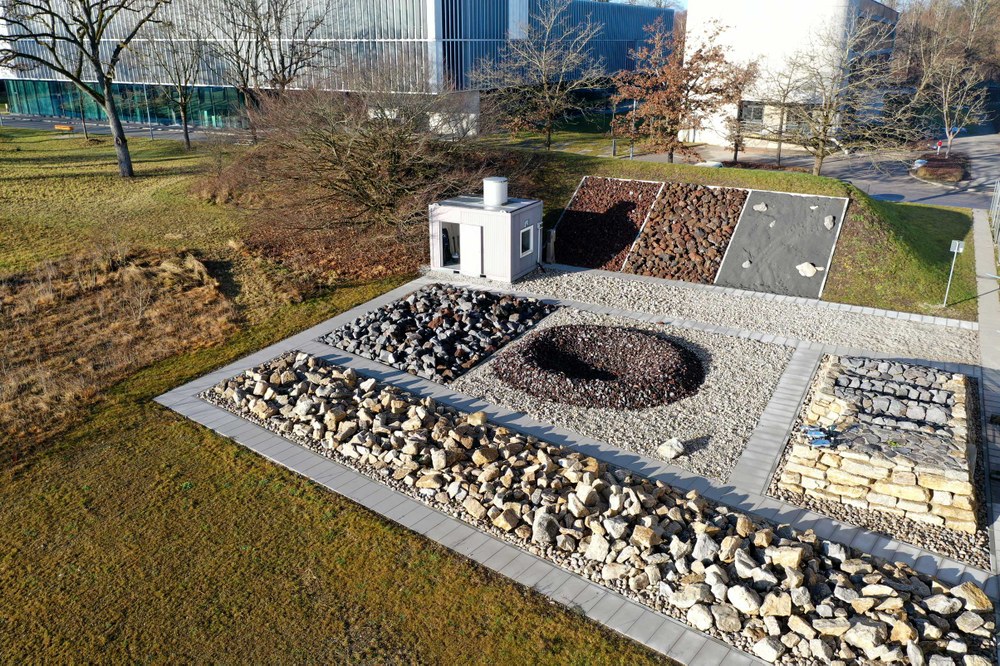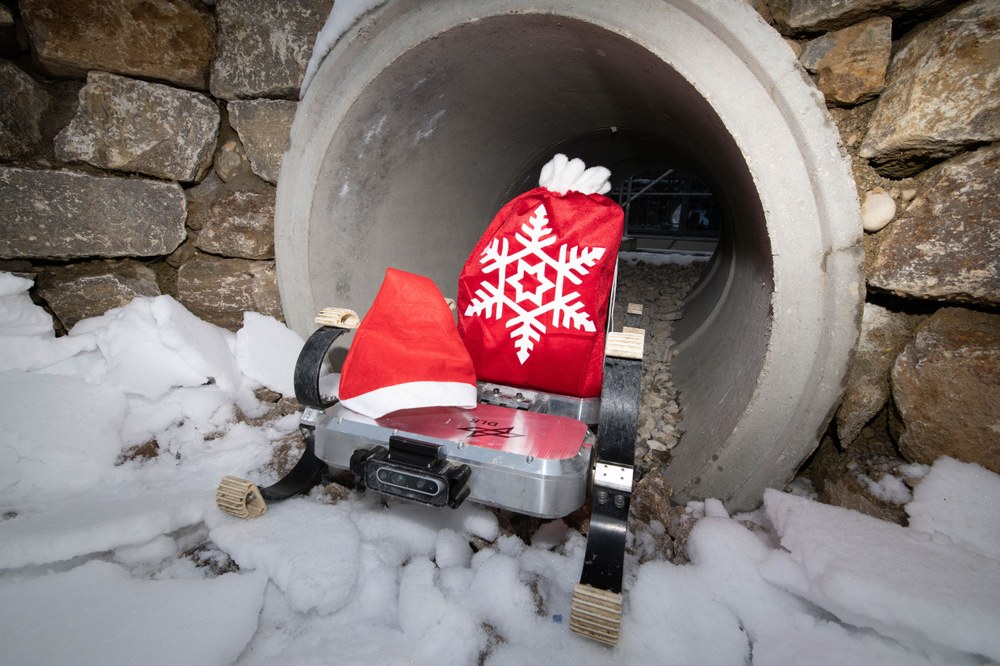DLR's Scout rover trains for the Moon and Mars



At first glance, it may seem like an expansive Zen Garden, but it serves a far more scientific purpose. The German Aerospace Center (Deutsches Zentrum für Luft- und Raumfahrt; DLR) has established an outdoor testing ground for planetary rovers. Located in Oberpfaffenhofen, this site features a 'volcanic crater' surrounded by stretches of gravel, large and small boulders and a steep incline with various surface materials. These features have been meticulously designed to replicate the topography of volcanic landscapes found on the Moon and Mars. Researchers from the DLR Institute of System Dynamics and Control have recently initiated operations on this ground-breaking 630-square-metre test field. In particular, the exploration robot 'Scout' is undergoing preparations here for future missions.
On the Moon and Mars, huge, kilometre-long lava caves are thought to have formed billions of years ago as a result of volcanic activity. These tunnels and cave systems are of great importance to science, especially on Mars. This is because they could harbour traces of former or even existing life. However, the steep, impassable crater walls are not yet accessible to conventional rovers. DLR researchers want to explore these lava caves with the help of Scout.
Etna volcano serves as a lunar analogue
The planetary test field drew its early inspiration from the volcano Etna in Italy. Both the Moon and Mount Etna share comparable extreme conditions. In constructing the site in Oberpfaffenhofen, the Scout team used the data obtained from a survey of Etna. They identified frequently occurring obstacles, considering factors such as the properties of the materials, including density and surface texture. Specifically, they tailored the gradients to the real challenges encountered in lava caves.
"Our test field has inclines with acute angles exceeding 30 degrees, loose rocks, deep sand and additional obstacles. This goes far beyond the requirements for previous rovers," explains Project Manager Roy Lichtenheldt from the DLR Institute of System Dynamics and Control. In his leisure time, he explores and surveys uncharted alpine caves. "This allows me to combine my expertise in cave research and robotics in a unique way," the scientist adds.
The Scout rover commenced field operations with initial journeys for the Helmholtz-Future Project ARCHES (Autonomous Robotic Networks to Help Modern Societies), coordinated by the DLR Robotics and Mechatronics Center. Within this project, heterogeneous, autonomous networked robotic systems are developed to establish a foundation for addressing societal challenges. A demonstration of space-based technologies is planned for the coming year, 2022, on Mount Etna – mirroring planetary exploration. The newly established test field in Oberpfaffenhofen will also serve as a preparation ground for this endeavour.
Rover for challenging terrain
The DLR rover, measuring one metre in length and half a metre in width, consists of three articulated back elements. Resembling a centipede, it adeptly navigates steep slopes, negotiates boulders and traverses gravel or sandy terrain with its six flexible spoked wheels. The robot is equipped with one motor drive per wheel and exhibits remarkable versatility. It is capable of driving upside down and withstanding falls from heights exceeding 1.5 metres. These features render it well-suited for exploration on the Moon and Mars. On Earth, the robust system can be used to rescue buried victims or in agricultural robotics.
Roy Lichtenheldt and his team are focussing on making Scout as reliable and energy-efficient as possible, as well as environmentally friendly and nature-friendly. At the DLR Institute of System Dynamics and Control, the team utilises the new test field to refine the exploration rover for future missions and to test new technologies.
